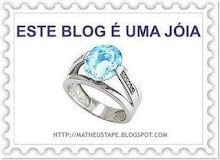
El modelo matemático creado conjetura con un 94% de fiabilidad las probabilidades de que se produzca una separación
El modelo matemático creado conjetura con un 94% de fiabilidad las probabilidades de que se produzca una separación.
Según el matemático inglés James Murray el amor puede medirse a través de la matemática. El hombre creó una fórmula que evalúa los riesgos de que un matrimonio acabe en divorcio, según publicó el diario The Telegraph.
Murray es profesor de la Universidad de Oxford y acaba de presentar ante la Royal Society de Londres un modelo matemático que, según sus creadores, predice con un 94% de fiabilidad las probabilidades de que se produzca un divorcio.
El diario 20minutos.es publicó que el estudio realizado se basa en la grabación de las conversaciones de unas 700 parejas recién casadas a las que se sometía a diversas preguntas sobre temas controvertidos como dinero, sexo y familia política.
El profesor Murray y sus colaboradores puntuaron de forma positiva las respuestas en tono distendido y con sentido del humor. Por el contrario, valoraron negativamente aquéllas en las que se mostraban señales de enfado o de desprecio.
Dichas puntuaciones se utilizaron para identificar los distintos tipos de parejas y predecir las posibilidades de supervivencia de su matrimonio a posibles crisis. Luego se desarrolló un seguimiento de los matrimonios -en intervalos de uno o dos años durante un total de doce- y tras ello, los matemáticos confirmaron la "sorprendente exactitud" del modelo de predicción.
Así es que Murray se mostró ante la Royal Society "completamente asombrado de que las emociones humanas puedan trasponerse a un modelo matemático con un índice de predicción tan elevado".
Fuente: Infobae
Couples wondering if true love will last could find out if they are a match made in heaven by subjecting themselves to a mathematical test.
A professor and his team have perfected a model whereby they can calculate whether the relationship will succeed.
It a study of 700 couples, Professor James Murray, a maths expert at Oxford University, predicted the divorce rate with 94 per cent accuracy.
His calculations were based on the simplest of things - a 15-minute conversation between a couple.
They were asked to sit opposite each other in a room on their own and asked to talk about a contentious issue, such as money, sex, or relations with the in-laws.
Each couple was told to talk about the same topic - one which they have been at loggerheads for some time - for the whole 15 minutes.
Prof Murray and his colleagues recorded the conversation and awarded the husband and wife positive or negative points depending on what was said. The points range from plus four to minus four.
The partner who showed affection, humour or happiness as they talked was given the maximum points, while those who displayed contempt or belligerence received the minimum.
Prof Murray, a Fellow of The Royal Society, said contempt was deemed more destructive than disgust, sadness or anger.
He said the scores of the wife and the husband were fed into the mathematical model and plotted onto a graph.
The point at which the two lines meet illustrated the marriage's chances of success or failure.
"I am still absolutely amazed that human emotions can be put into a mathematical model and that a prediction can be made," he said.
"What astonished me was that a discussion, sometimes highly charged and emotional, could so easily and usefully be encapsulated in what is actually a simple model of a couple's interaction.
"It is not so much of an equation, it is trying to assess and quantify how a couple interact by giving them a scoring system.
"We take those figures and plot them on to a graph. If either the husband or the wife is consistently negative then they are going to get a divorce."
Prof Murray said married couples could be divided into five groups - two of which were stable, two which were not and another category in between.
"Marriages can be classified into only five general types, some of which are stable and others not," he said. "Depending on the group, some couples might as well get divorced right away."
The first identifiable category is the "validating" couple who are calm, intimate, who like to back each other up and share a companionable relationship. They prefer shared experience instead of individuality.
The second group are the "avoiders" couple who do their best to eschew confrontation and conflict. They only respond positively to their partner.
Prof Murray said: "The most stable relationships are those which take a more old-fashioned view and see marriage as mainly about companionship."
The "volatile" couple, who are romantic and passionate but have heated arguments are a mix of stable and unstable, but generally tend to be more unhappy than not.
The "hostile" category is when one partner does not want to talk about an issue and the other agrees, so there is no communication.
The final "hostile-detached" couple is where one is fiery and wanting to argue, while the other one is just not interested in discussing the issue.
Prof Murray, who is giving a lecture on the subject tonight at the Royal Society in London, said the original forecast of who would get divorced in his study of 700 couples was 100 per cent correct.
But, he added: "What reduced the accuracy of our predictions was those couples who we thought would stay married and unhappy actually ended up getting divorced."
Fuente: Telegraph.co.uk

























































































































![Validate my Atom 1.0 feed [Valid Atom 1.0]](valid-atom.png)


2 comentarios:
Está bien y qué Achernar? No todo es matemático en nuestro universo, de ser así yo no existiría ya. Soy lo menos matemático que existe. Un abrazo!
No sé qué porcentaje de veracidad tiene ese sistema matemático... Creo que las relaciones sentimentales tienen más que ver con "energía" que con los números. "Cuestión de química", como dicen.
Publicar un comentario